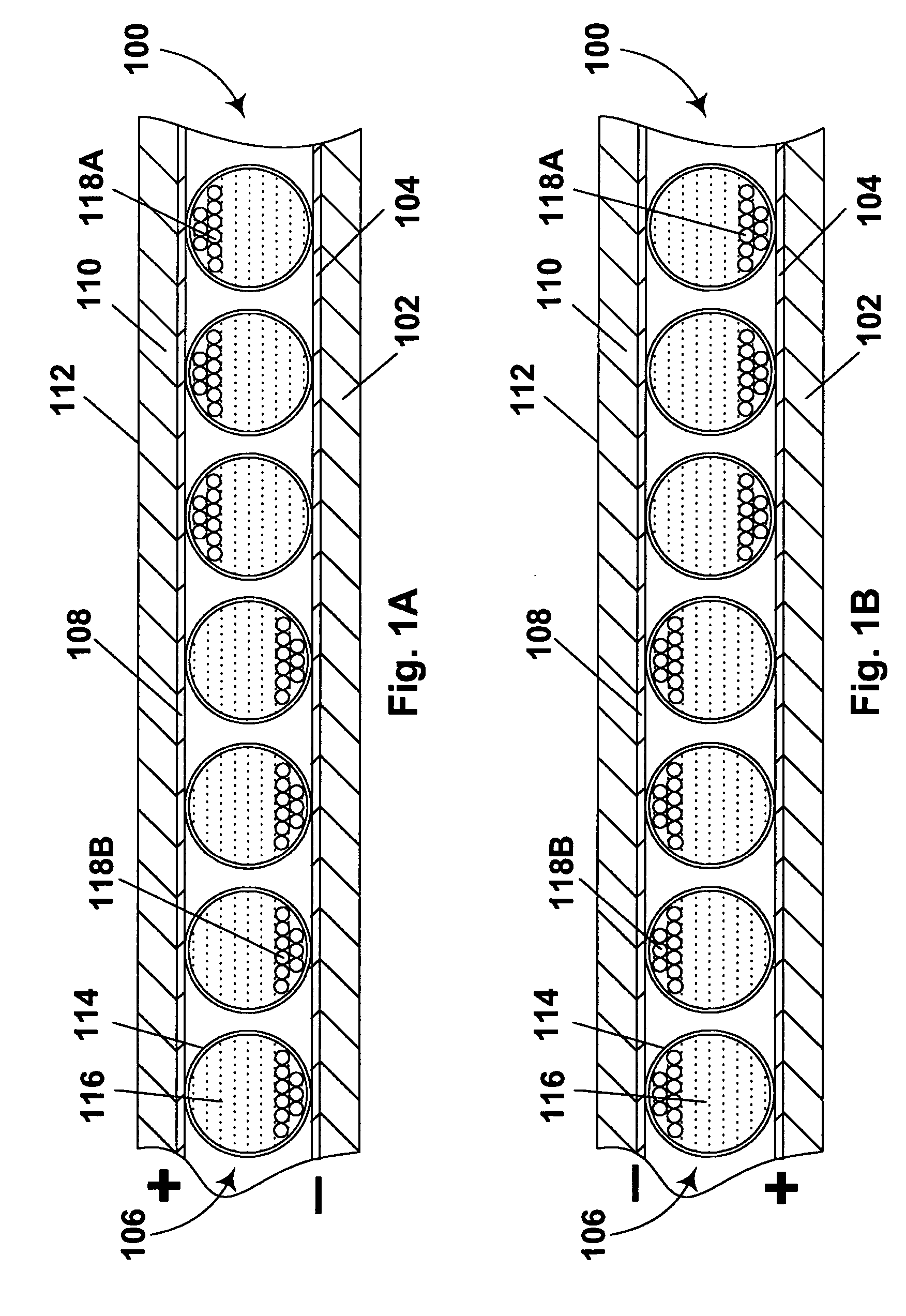Nevertheless, problems with the long-term
image quality of these displays have prevented their widespread usage.
For example, particles that make up electrophoretic displays tend to settle, resulting in inadequate service-life for these displays.
Such gas-based electrophoretic media appear to be susceptible to the same types of problems due to particle
settling as liquid-based electrophoretic media, when the media are used in an orientation which permits such
settling, for example in a sign where the medium is disposed in a
vertical plane.
Indeed, particle
settling appears to be a more serious problem in gas-based electrophoretic media than in liquid-based ones, since the lower
viscosity of gaseous suspending fluids as compared with liquid ones allows more rapid settling of the electrophoretic particles.
However, the cost reductions provided by the use of encapsulated electrophoretic media have hitherto not been accompanied by corresponding cost reductions in the components used for driving the display.
Although such
active matrix backplanes can write any desired image on the electro-optic medium, they are expensive, the cost of the
backplane amounting to about 80 per cent of the total cost of the display.
Furthermore, since such backplanes are typically produced using
semiconductor fabrication techniques developed for use in the computer industry, the
maximum size of the individual backplanes is limited, and large displays, for example those used to display data in airports, or railroad stations, or as billboards, may require the use of the multiple backplanes “tiled” to cover the desired area; such tiling produces additional complications, such as providing robust leads to ensure that the necessary data are supplied to each individual display.
It will readily be apparent that displays intended to display large numbers of characters will require very large numbers of electrodes, and that the cost of fabricating such large numbers of electrodes, together with the
voltage supply lines and control circuits necessary to drive the electrodes, results in substantial costs for the direct drive
backplane.
One of the problems with many electro-optic displays is the limited range of colors which each pixel of the display can produce.
For example, a display having black and white extreme optical states may be capable of displaying multiple shades of gray, but is not capable of displaying any colors other than black, white and gray.
However, for the reasons already discussed, the available color
gamut from such a display is inherently limited.
The main problem with this approach to generating color is that the brightness of the display is limited by the
pixelation of the color filter.
For example, if a red color is desired, the pixels covered by red filters are set to appear red, whereas the pixels covered by green and blue filters are set to appear dark, so that only a fraction of the display surface has the desired color while the remaining portion is dark, thus limiting the brightness of any color obtained.
However, this approach suffers from limited brightness similar to that of the color filter approach, in that, for example, if a red area is desired only a fraction of the desired area can be set to appear red.
Both the color filter and
patterned media approaches require registration of the differing areas of the filter or media with multiple sets of electrodes, and may involve complex techniques for producing the display, thus increasing the cost of the display and possibly compromising its
optical quality, especially in the case of
high resolution displays in which the individual pixels are very small.
 Login to View More
Login to View More  Login to View More
Login to View More 


